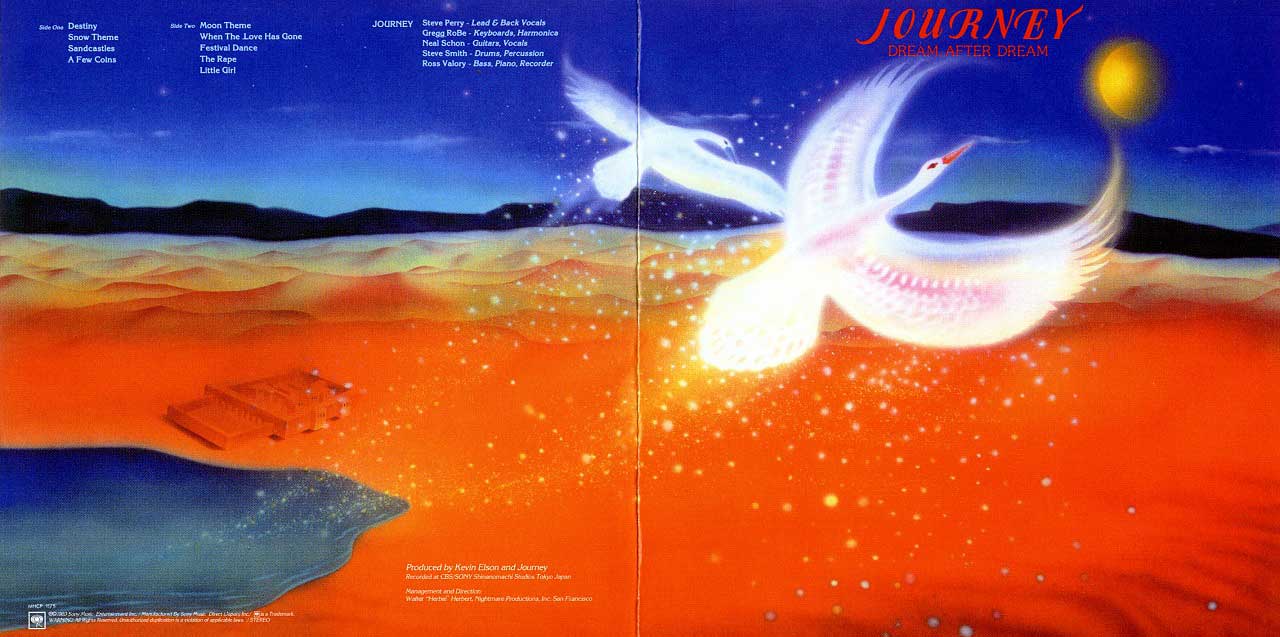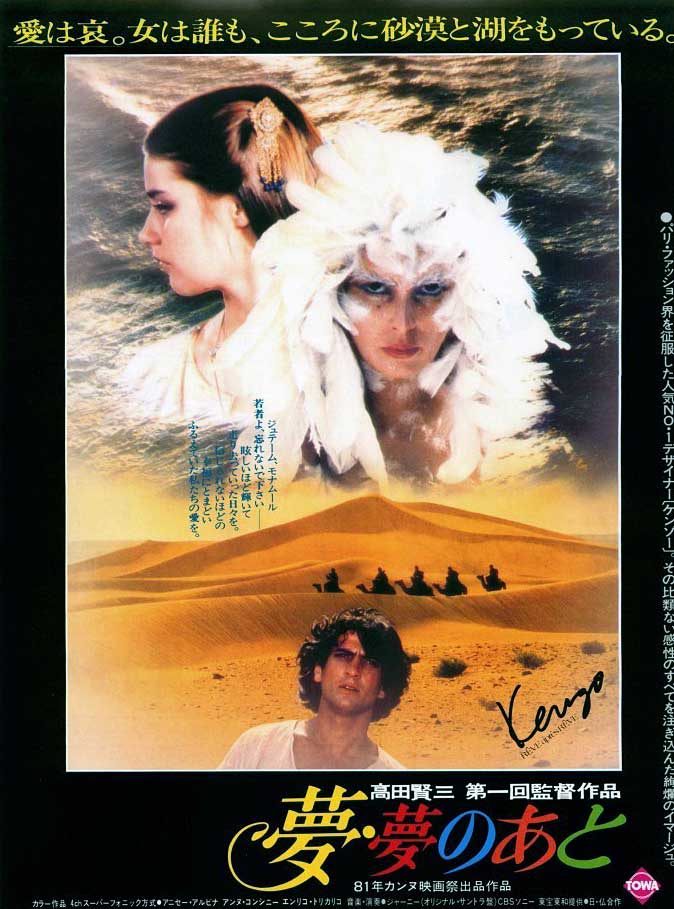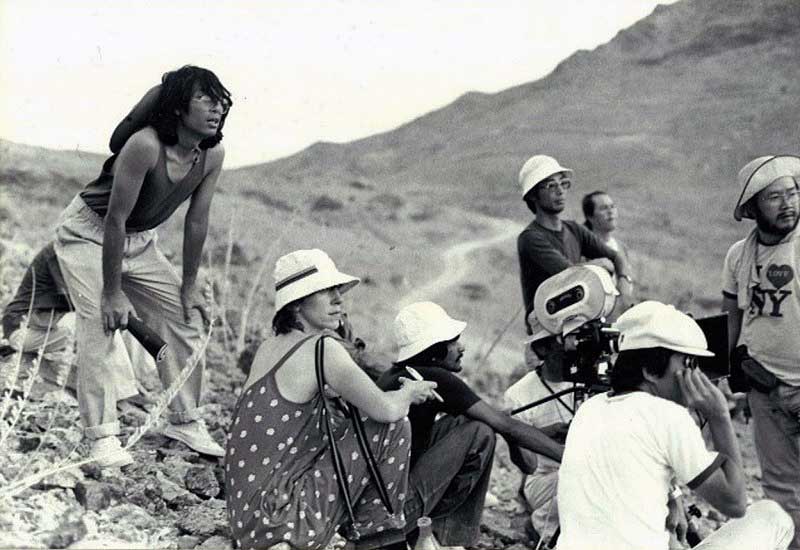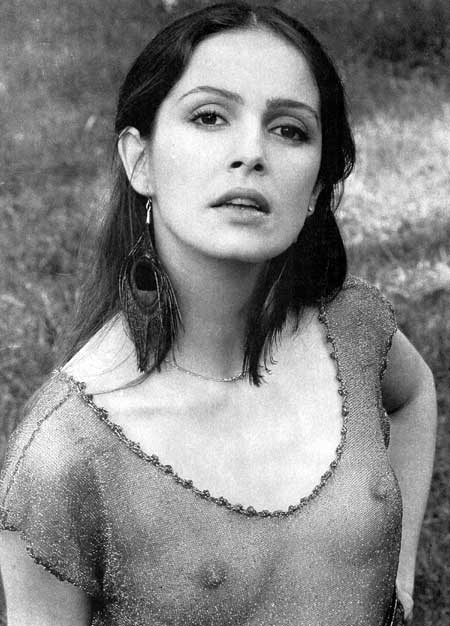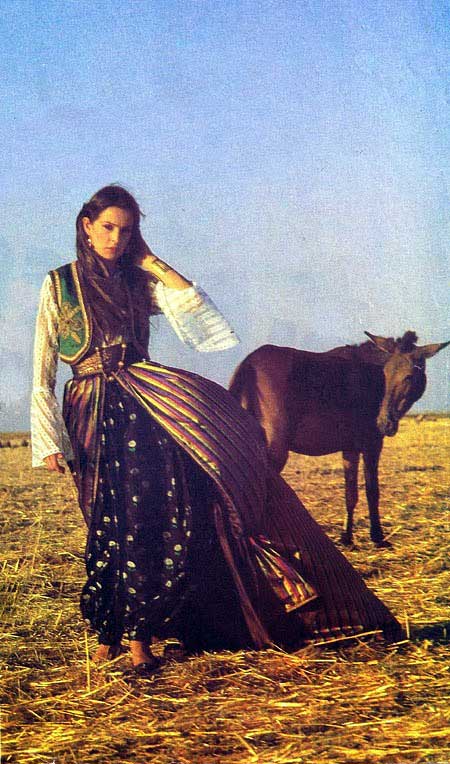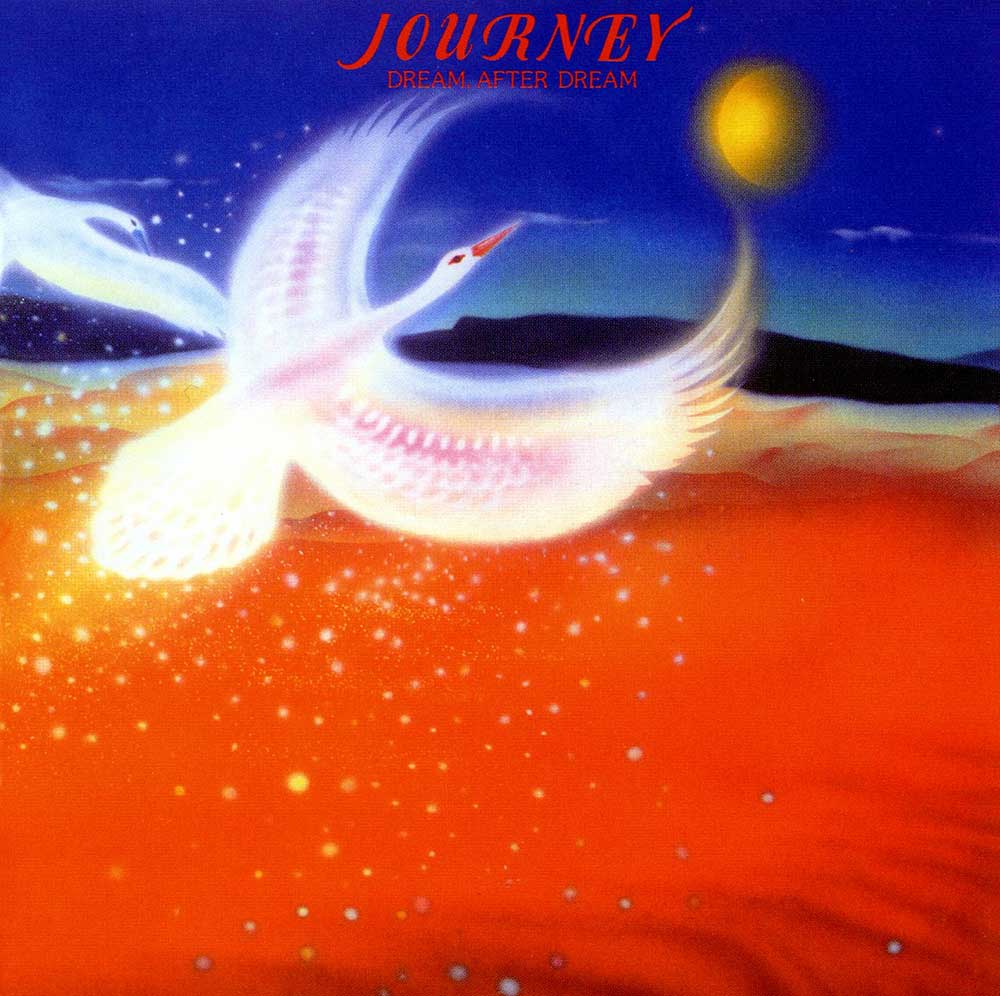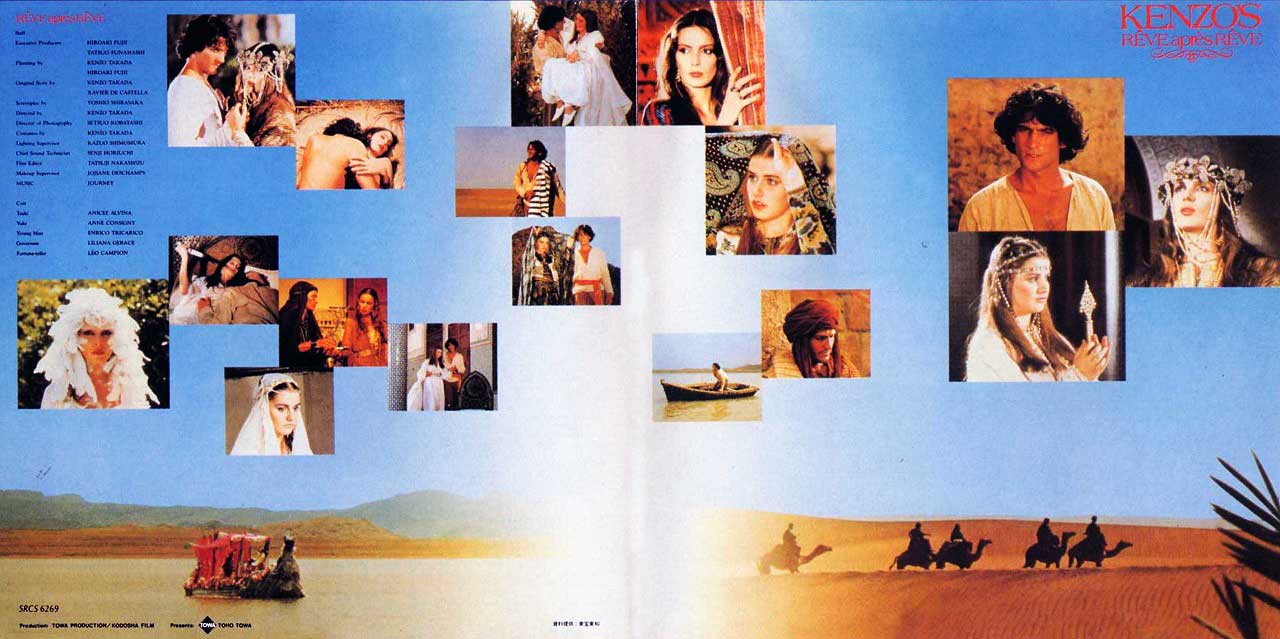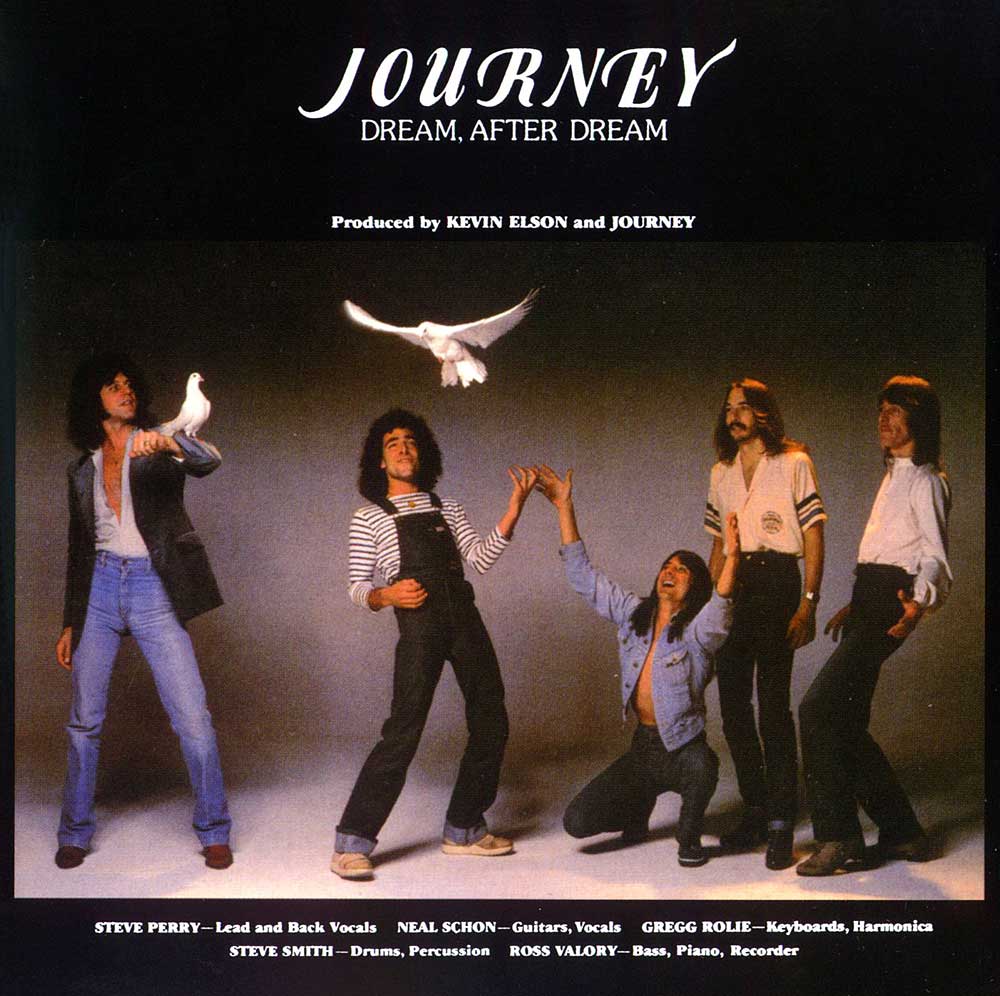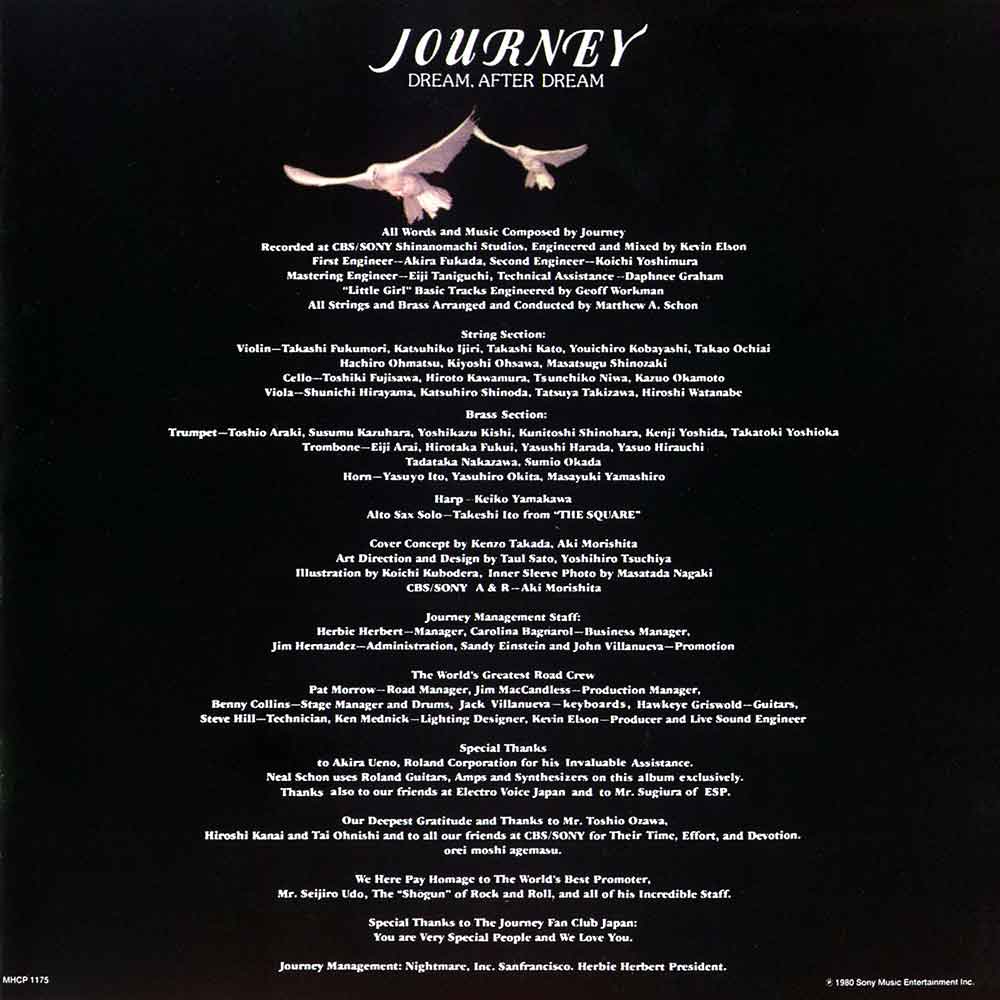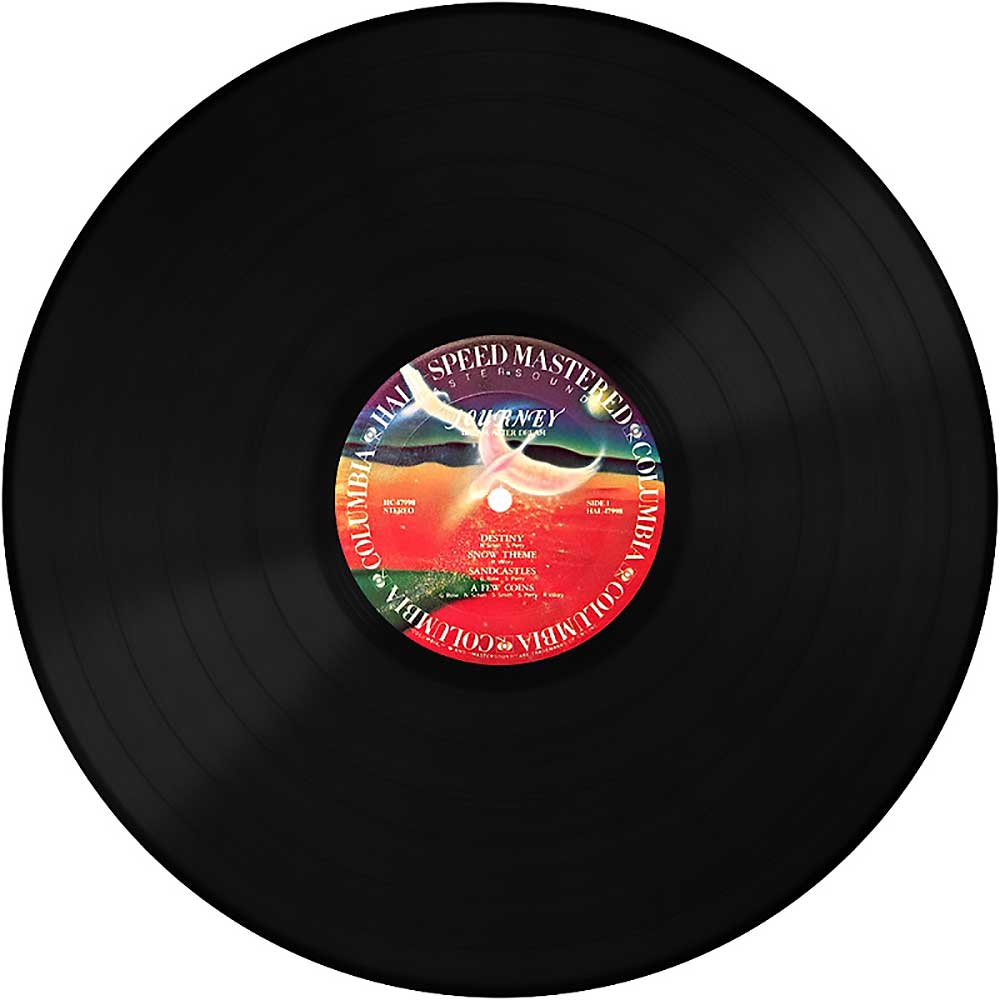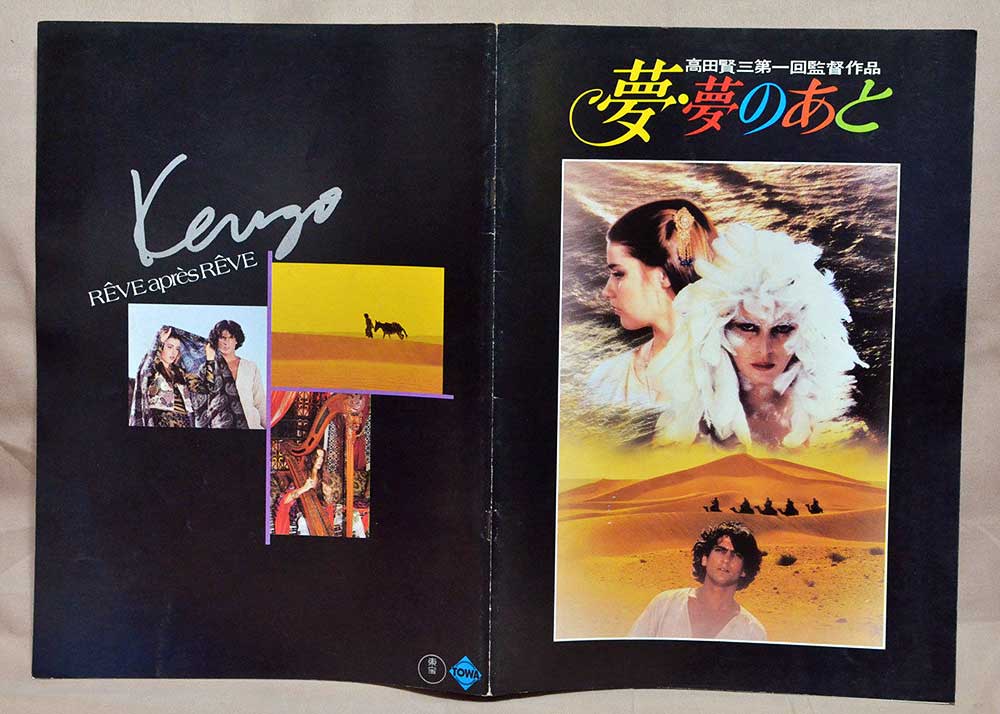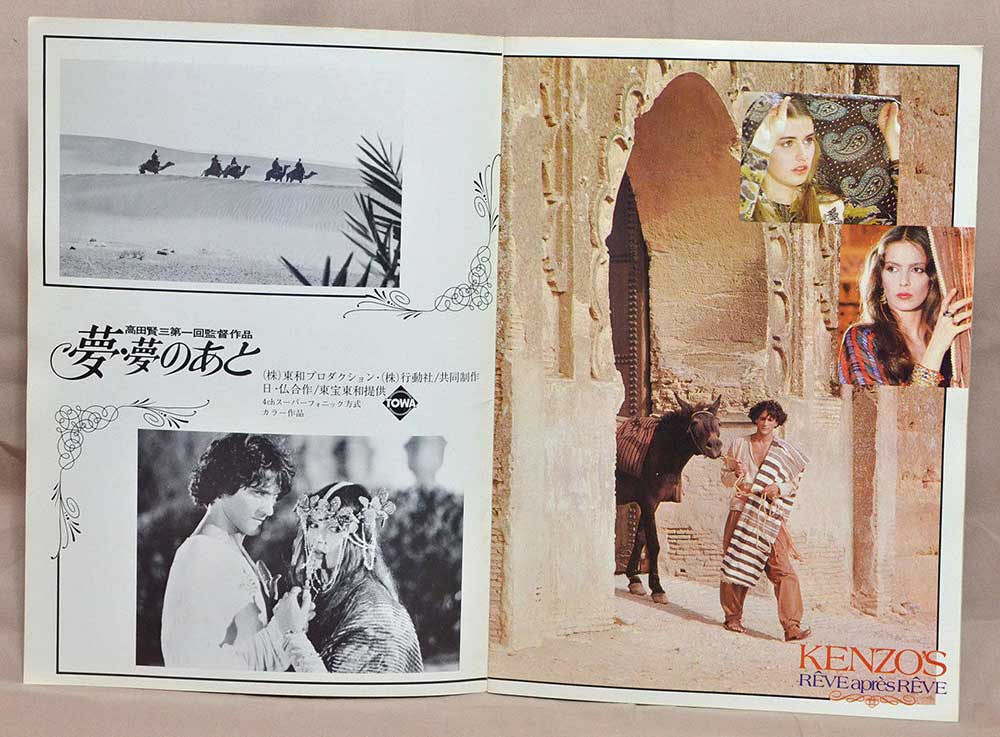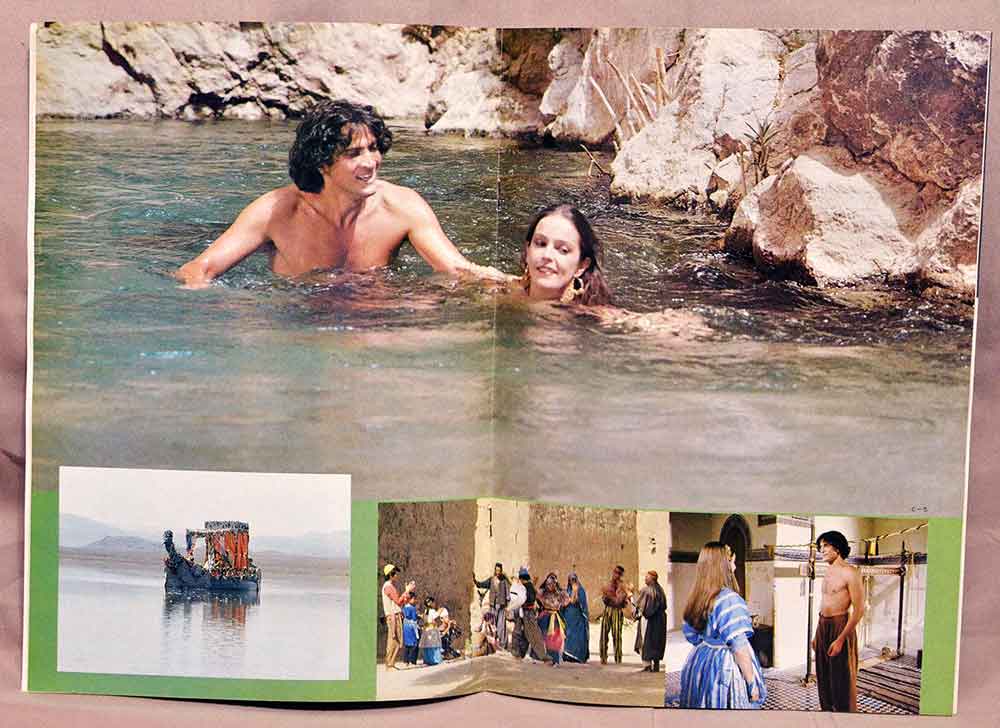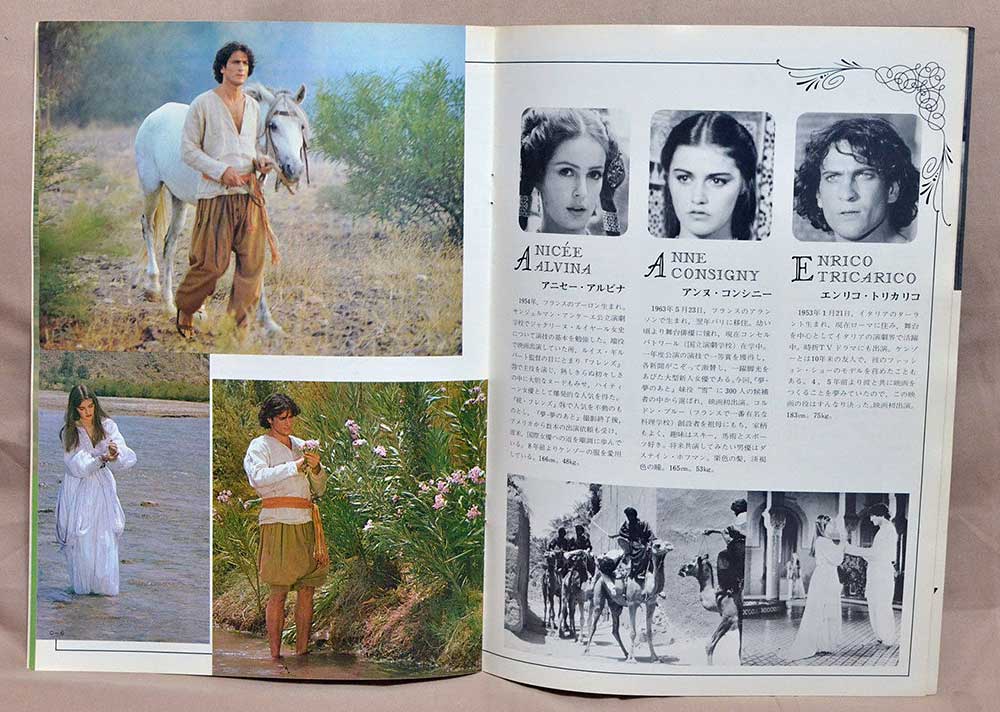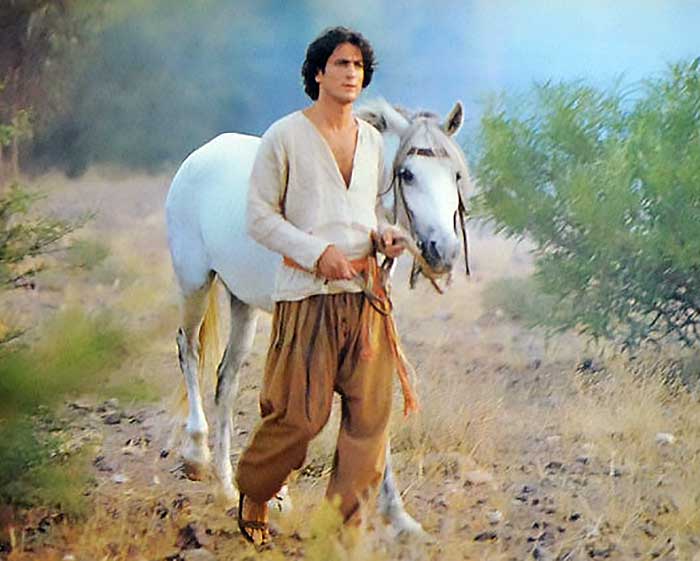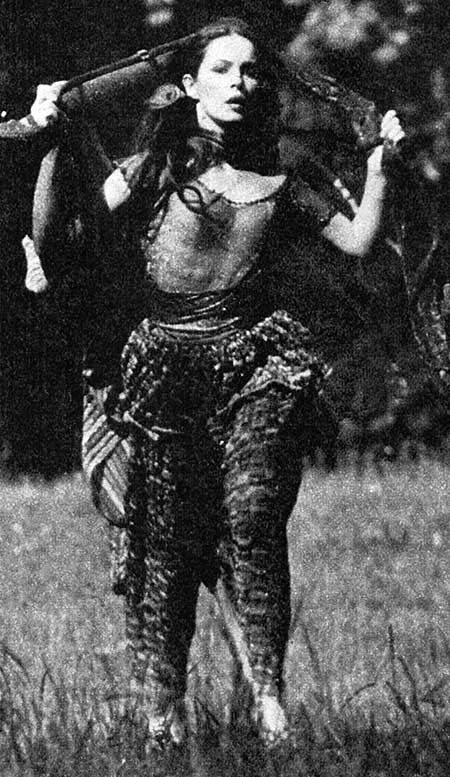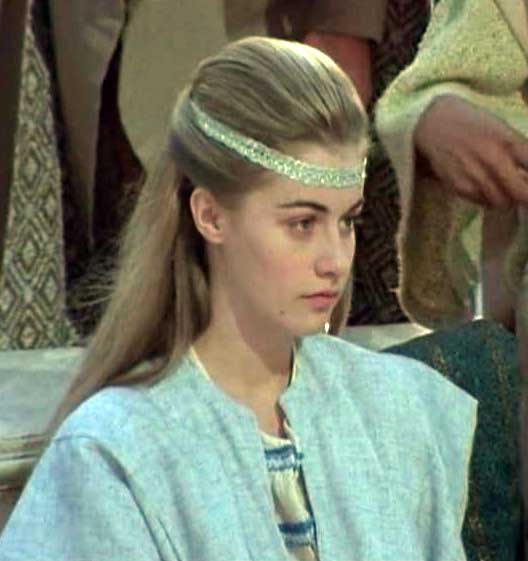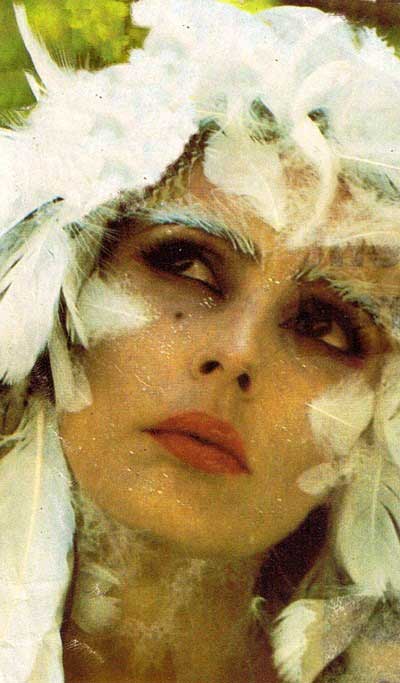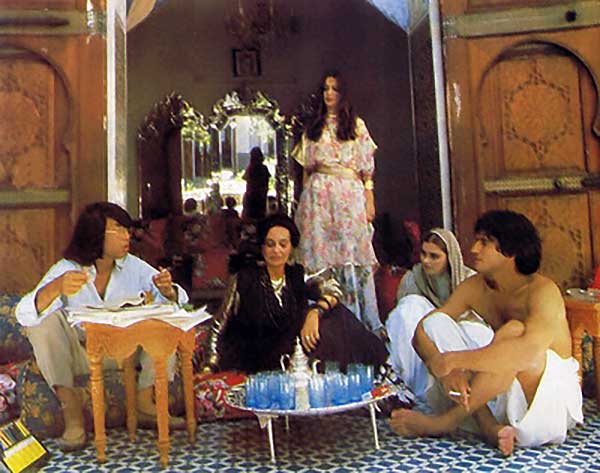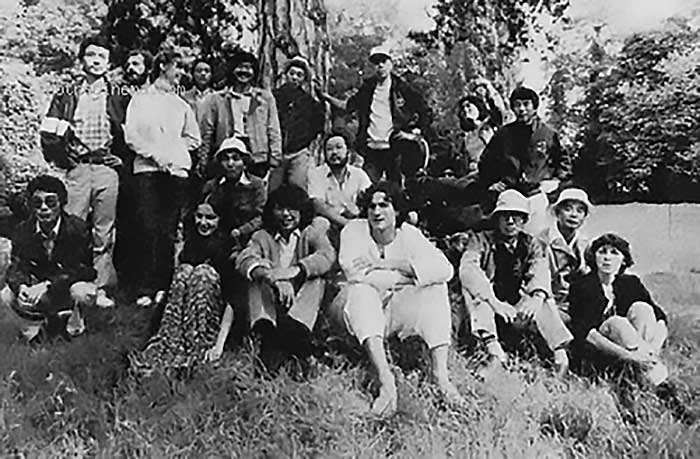”This is again the story of a mysterious lost movie, which was shot by Kenzo in 1980 and his splendid soundtrack made by Journey. "Yume, Yume No Ato" is a mystery on film, an esoteric fable that was created by the Japanese designer Kenzo Takada in 1980.
Lorenzo
“Yume, Yume No Ato” è un mistero su pellicola, una favola esoterica che fu realizzata dallo stilista giapponese Kenzo Takada nel 1980.
The official story has it that at the end of 1978 producer Hiroaki Fujii sent a letter to Kenzo Takada via an actress: “Dear Mr. Kenzo Takada,” the letter began. “I knew that You are very interested in cinema and was wondering if You would like to work with me on an interesting production ».
Another story, now gone from years and therefore no longer verifiable, spokes of involvement of Salvador Dalì and other exponents of the French and Hispanic nobility.
Be that as it may, Kenzo said he was unable to direct a film but Mr. Fujii was so enthusiastically insistent that the designer ended up giving in, becoming at the same time scriptwriter, screenwriter, costume designer, artistic director and director.
Kenzo was inspired by a fairy-tale world like that of Kenji Mizoguchi’s “Tales of the Pale August Moon”: A young weaver meets a pair of beautiful sisters by a lake.
The older sister is called Tsuki (Luna) and the younger sister is called Yuki (Snow). The young man is attracted by the image and the bewitching spirits of the sisters and is completely at their mercy.
Morocco was chosen as the location, as a mix of cultures at the crossroads between East and West. In July 1980 the crew headed to Zagora, near the Sahara desert. It was a vast place, with yellowish-brown mountains and desert that stretched as far as the eye could see. Daytime temperatures reached 50 ° C and Kenzo says they consumed 250 1.5-liter bottles of Evian in a single day.
Shootings proved to be one difficulty after another. The actors were mostly Italians and French and the staff mostly Japanese, so communication problems prevented the whole process from proceeding smoothly.
It was hot as hell and there were also unexpected incidents such as when the artistic unit got stuck in a swamp or a scene in which a horse led by the protagonist had to collapse from fatigue but proved to be resistant to the anesthetic because Moroccan horses eat regularly wild cannabis and therefore the drug was completely ineffective.
The production budget was 400 million yen. For the soundtrack, Kenzo wanted Journey and, thanks to Fujii’s efforts, the group accepted, giving up on a European tour.
The original title of the film, “Yume, Yume no ato (The dream, after the dream)”, was only translated into English and French and the premiere, with Kenzo’s extreme anxiety, took place in Paris:
“Parisians have a sense of extremely ruthless aesthetic, it was the worst place and I knew it.
300 people came and when a giggle burst out during a critical scene that should have moved the audience to tears, I realized that I had not been able to create the atmosphere I wanted. At some point, the audience started to get up and walk away in the middle of the film.
It was a total fiasco. And it was all my fault. I had caused significant problems for everyone involved, not least Fujii. ”
As a kind and honorable person, Kenzo, therefore, assumed all responsibility and, deeply hurt by the rudeness of the public, decided to block the distribution of the film, which was only broadcast a couple of times on Japanese TV and has disappeared apparently so far.
The music score
Journey was then one of CBS’s most successful record and live bands: they had produced three progressive jazz albums to then acquire a singer and turn towards an AOR commercial style and were returning from the success of the album Departure, which had placed eighth on the Billboard 200 album chart.
The soundtrack by Dream After Dream was recorded in the space of time between Departure and Escape and was the seventh album of Journey, representing a partial return to the progressive vein of the group’s beginnings.
It is the latest album with the keyboard player and founding member of the group Gregg Rolie and of its nine tracks, only three are sung, admirably, by Steve Perry while the rest are instrumental. The orchestral arrangements were handled by Neal Schon’s father, Matthew, and “Destiny” still represents the longest track recorded by Journey so far.
Recordings took place at CBS / Sony Shinaromaki studios in Tokyo between 13 and 22 October 1980. A Japanese tour was combined with the recording sessions which then resulted in a couple of songs included on their next album “Captured”, recorded on the evening of the 13th, the final date at the Koseinenkin Hall in Shinjyuku.
The music is extremely inspired and well played, you can perceive all the commitment and passion of a band that once in a while is free to create and work outside the rules of the music market to which it is normally forced.
The compositions are presented as separate works, where their cinematicity is reflected in the generous use of the section of arches, which gives them a mysterious and ethereally romantic character, always entirely in the context of the vocal extension by Perry, who sings like never before and since.
Harder rock rhythms are rare, but in emotional dynamics, Dream After Dream surpasses anything Journey have ever realized. The long passages of the slow and meditated guitar solo perfectly underline the landscape of dreams.
The album was released on December 10, 1980, only in Japan and came as a surprise for both fans of the band and for enthusiastic critics, when years later its existence emerged thanks to the internet (in the US only one version on tape had quietly come out in 1985) and imports from Japan. On the other hand, there is still no trace of the film.
Except that…
Journey’s entire album “Dream, After Dream”
Film Synopsis
A young weaver with no name (Enrico Tricarico, already seen in the role of the director of the Village 27 in Ugo Tognazzi’s “The Twilight Travellers“) leaves in search of happiness. A wise soothsayer (Léo Campion) tells the young that he will find it on the opposite bank of a south lake, the weaver listens to the advice and goes to it.
After crossing the desert, the man arrives at the lake and, finding an abandoned ship nearby, sets sail late at night.
At sunrise, he loses consciousness and, upon awakening, he discovers he has been brought to an ancient castle at the opposite end of the lake. This castle is home to two mysterious sisters, named Tsuki (Anicée Alvina) and Yuki (Anne Consigny), the latter of whom he had found him and brought him to safety.
Although fascinated by Yuki, the man falls in love with Tsuki, who invites him to bed with her. The man starts weaving for both of them, but while the fabrics he creates for Tsuki are particularly beautiful, Yuki finds hers to be inferior.
One day, Tsuki and the man meet outside the castle and make love on a flower bed. Upon their return, Yuki learns of their love story and is therefore saddened.
The two sisters start arguing and the man feels guilty for the animosity he has caused.
As a result of the quarrel, Tsuki decides that she will have to kill the man and invites him to bed once again. However, wrapped in his embrace, she finds she can’t stab him.
She escapes to the terrace, followed by the young man, who watches in awe as Tsuki slowly transforms into a bird, spreads her wings and takes flight. Yuki imitates her and as she flies off into the distance, she whispers regretfully to the man that although he was too beautiful and wonderful to be loved by them, they both still fell in love with him.
The man cries to heaven to confess his true love and is left alone to face his fate.
Production
The project was announced at a press conference on June 16, 1980, and was a Japanese / French co-production, as the cast was largely composed of French actors while the known crew members were a mix of the two nationalities.
Kenzo with Anicée Alvina (Tsuki), Liliana Gerace (the Housekeeper), Anisée Alvina (Tsuki), Anne Consigny (Yuki) and Enrico Tricarico (the Young Weaver)
Kenzo Takada wrote the subject of the film together with Xavier De Castella, his then partner, and Yoshio Shirasaka was the screenwriter.
Hiroaki Fuji and Tatsuo Funahashi were the producers,
Tatsuji Nakashizu was the production designer,
Senji Horiuchi and Julien Cloquet were the sound engineers,
Setsuo Kobayashi was the cinematographer.
Kenzo with the cast and the troupè
The film officially released on January 24, 1981and has a duration of 101 minutes.
The French title is Rêve, après Rêve.
It is understood that the nature of the film was very intimate and metaphorical and that consequently it required a certain sensitivity and predisposition of which not everyone can be gifted while education should be something common to all.
Due to the rudeness of the French public, Kenzo felt so humiliated that he always refused to publish it on home video or DVD and after his death the hopes of being able to recover a copy of this film seemed even more vain but in recent months it is incredibly vain. A copy of DVD with an interactive menu that is in the possession of an American gentleman and which seems to have been extracted from a VHS, perhaps recorded from one of the very rare Japanese TV shows, came up.
It is unclear whether this copy will ever be made available to the public but perhaps, the casa producer TOHO-TOWA Company, it will one day decide to reprint the film and distribute it.
Important Update:
A few months after the release of this article, fortunately, a collector was able to share an incomplete copy of the film which, even if missing by about half an hour, manages to give an idea of the film to those who, like me, was trying to watch it for decades.
CLICK AND WATCH THE VERY RARE COPY OF THE FILM SHARED BY THE AMERICAN COLLECTOR!
–
“Yume, Yume No Ato” (Jp/Fr) by Kenzo Takada
Director: Kenzo Takada
Subject: Kenzo Takada, Xavier De Castella
Screenplay: Yoshio Shirasaka
Costumes: Kenzo Takada
Set design: Tatsuji Nakshizu
Cinematographer: Setsuo Kobayashi
Sound: Senji Horiuchi, Julien Cloquet
Producer: Hiroaki Fujii, Tatsuo Funahashi
Music: Journey (Neal Schon: guitars, backing vocals – Gregg Rolie: keyboards, harmonica – Ross Valory: bass, piano, flute – Steve Perry: vocals and backing vocals – Steve Smith: drums and percussion) – Production: Kevin Elson
Characters and performers
Enrico Tricarico: The Young weaver
Anicée Alvina: Tsuki
Anne Consigny: Yuki
Léo Campion: Seer
Liliana Gerace: Housekeeper

